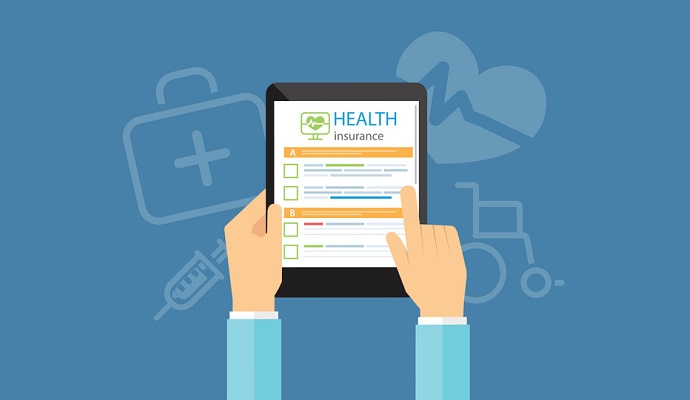How Patient Portals Can Produce Revenue Cycle Benefits
Between providing more efficient bill pay, improved patient loyalty, and better chronic disease management, patient portals can produce boost revenue cycle benefits.

- In order to accrue financial benefits from implementing a patient portal, healthcare organizations must understand how their customers want to use the technology and why it’s important to keep the tool patient-centered.

As risk-based payment models such as accountable care organizations gain industry popularity, providers need to implement patient engagement strategies not only to deliver quality care, but to ensure that their revenue cycles can benefit from adopting these new techniques.
Portals can streamline the patient experience and increase consumer loyalty, said David Clain, Manager at athenaResearch and Stephen Moseley, Data Science Manager at athenahealth, if providers keep their users in mind when designing and adopting these tools.
Patient portals promote more efficient bill pay
According to Clain and Moseley’s data, patient portals improve revenue cycle management by allowing patients to pay their medical bills online. As a result, practices receive payment faster, in fuller amounts, and at a higher frequency.
READ MORE: How Lyft Healthcare Changed Lanes to Social Determinants of Health Work
Online bill pay not only benefits practices financially, but helps improve patient satisfaction rates. Research shows that patients prefer to pay their bills online rather than by check.
“One thing that we’ve heard repeatedly – and these are anecdotes, but they’re anecdotes that come up a lot in conversations with clients with high portal adoption – is patients even without a ton of emphasis from practice staff will often choose to pay online,” Clain noted.
“It’s easier in a lot of cases, especially for tech-savvy patients, to get a bill electronically, to go online, see what they owe, see why they owe that amount, what visit it’s from, and pay by credit card right there rather than having to submit a check in the mail.”
athenaResearch’s data backs up these claims. Moseley says total patient bill collections increased by approximately 30 percent last year; bill collections via the patient portal, however, increased by 77 percent.
Patient portals help make more loyal patients
READ MORE: Epic Sets Sights on Healthcare Consumerism with CRM Platform Launch
Through effective and strategic use, patient portals can boost patient retention rates. athenaResearch data shows that 80 percent of patients who adopt the portal will return to a practice within 18 months, as opposed to just 67 percent of portal non-adopters.
This patient loyalty boost highly depends upon providers using portal tools to build strong relationships with patients. Communication tools like direct secure messaging helps providers forge strong bonds with their patients between visits. When those patients need to visit the doctor again, they are more likely to return to those they had relationships with.
 “If you are a patient at primary care practice or you have some cardiac issue and you have an ongoing relationship with a cardiologist, I think it’s really helpful to be able to continue the conversation outside of the office,” Clain explained. “And once you’ve done that a couple of times, you feel that connection to your provider, you have a sense that they are committed to your health and to ensure that you have good outcomes.”
“If you are a patient at primary care practice or you have some cardiac issue and you have an ongoing relationship with a cardiologist, I think it’s really helpful to be able to continue the conversation outside of the office,” Clain explained. “And once you’ve done that a couple of times, you feel that connection to your provider, you have a sense that they are committed to your health and to ensure that you have good outcomes.”
Patient portals have more tactical uses for improving patient loyalty. By enabling communications regarding health ailments, providers can call the patient back into the office if need be.
“In a lot of cases patients secure message their doctors and they ask ‘I’ve had this concern about chest pain or a rash that won’t go away, should I come into the office?’” Clain said.
READ MORE: What Are HCAHPS Scores, Why Are They Important to Patient Satisfaction?
“A lot of times the answer is no, and you can address a lot of concerns a patient has just through secure messages and they don’t have to come in. But in some cases the answer is yes, and sometimes there are rather urgent issues that come up and a cardiologist can say ‘if you’re having chest pains I’d actually like to see you today.’”
Self-scheduling functions also play a considerable part in boosting patient loyalty rates. According to Moseley and Clain, patients tend to prefer online scheduling of appointments over phone scheduling. If a practice offers online scheduling, patients are more likely to stick with that practice than find another one.
Patient portals ease chronic disease management
Portals have also enhanced the way providers approach chronic disease management. According to Clain, these technologies are the central reference point for patients and providers to manage chronic illnesses.
“The portal becomes sort of the hub for managing especially patients with chronic diseases outside the office, bringing them back into the practice when you need them,” Clain noted. In the long run, this helps practices maintain patient loyalty.
 Beyond increasing appointment volume, however, patient portals help providers gauge the health of their chronically ill populations and take action steps from there. This ultimately builds strong relationships with patients.
Beyond increasing appointment volume, however, patient portals help providers gauge the health of their chronically ill populations and take action steps from there. This ultimately builds strong relationships with patients.
“I think that deepens the relationship in a way that is hard for us to measure, but I think as more and more providers are on the hook financially for how healthy their patients are and how much they cost, I think providers are pushing to deepen those relationships, they’re trying to do more through the portal,” Clain said.
In the end, this means implementing strategic interventions. Patient portals are not necessarily tools just to drive a high volume of patient visits. Rather, they help providers identify patients who need medical intervention in order to create the best possible outcomes.
“It’s not just how you get a patient to come in and fill a spot, but how you make sure that you see them often enough that you can really have a good handle on their health status and you can intervene early and often if you have to,” Clain explained.
Patient preferences still high priority
Ultimately, getting the most out of the patient portal depends upon fulfilling patient needs. Using good patient engagement strategies will lead to the best clinical outcomes.
According to Clain and Moseley, patient portal technology first saw high adoption rates as a result of meaningful use requirements. Because many meaningful use participants were simply looking to fulfill the patient portal requirement, Clain said they seldom considered best practices to get the most out of the technology.
“A lot of practices realized that they needed to have some sort of patient portal,” Clain said. “And many of them I suspect wouldn’t if not for the meaningful use requirements to do so. As a result they never really went through the difficult process of thinking about whether and why they want a portal and how to integrate it into the practice.”
Increasingly, providers are looking into how to meaningfully use their patient portals. When providers look into best practices for patient portal use, Clain said the industry can tap into the real potential of these technologies.
“I think that’s when we’ll start to unlock the real value of portals is when people go beyond saying, ‘let me just make sure I check the box,’” Clain noted. “And instead think about this as one of the central parts of how you interact with patients outside your office.”
The pair stated that effective use of the patient portal will drive adoption rates. According to some of Moseley’s research, providers with high portal adoption rates also have the highest portal engagement rates.
“You start off by driving portal adoption a little bit and getting patients on the portal,” Moseley said. “Every single one of our clients that has a high level of portal adoption has a very high level of portal engagement.”
“It’s actually kind of counterintuitive,” he maintained. “In order to get most patients on the portal, you need to have this ecosystem where the portal is the place to go.”
In the long run, it appears as though effective portal adoption that results in both financial and clinical benefits depends upon a full commitment from a practice. When the practice commits to the introduction of a new technology, strategic use of that technology, and patient preferences, it can see better patient outcomes and better revenue cycle management.
“It seems to be the case that the higher your portal adoption, the bigger the commitment the practice makes, and then the more use patients get out of it,” Clain concluded.
